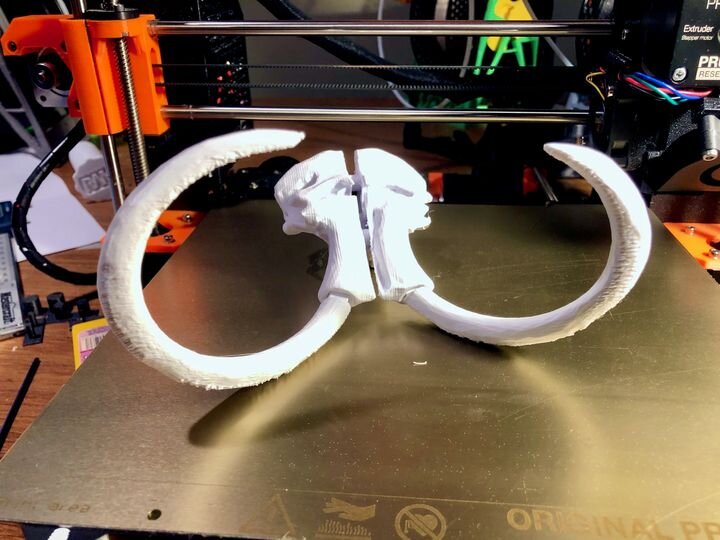![Partially 3D printing Mammoth skeleton from the Smithsonian [Source: Fabbaloo]](https://fabbaloo.com/wp-content/uploads/2020/05/image-asset_img_5eb0509d72f5c.jpg)
The Smithsonian is clearly one of the world’s leading museum institutions, and as such it holds literally millions of priceless artifacts.
Over the past years the organization has been quietly — or sometimes not so quietly — 3D scanning some of its more prominent pieces.
3D scanning is a practice that should be undertaken by all museums, as they do risk the loss of works should disaster occur. And it does, with the most obvious example being the terrible fire in Brazil that destroyed that country’s central museum and virtually all of its artifacts.
If only they had 3D scanned the objects there would at least be a digital representation of the object, even if it was physically lost. We wrote a piece on this concept after the Brazil museum disaster.
Museum 3D Scanning
That advice has been taken up by several leading museums, apparently including the Smithsonian. However, in almost all cases the detailed 3D scans are kept privately and not exposed to the public, who, might, for example, 3D print them.
It seems many museum officials are under the mistaken impression that someone would 3D print all of their pieces and set up a competing museum elsewhere to draw off their business. For some museums, this is the reason they don’t allow use of digital copies.
That’s unfortunate because these digital representations can be used in a variety of ways to leverage the knowledge, sometimes worldwide. Multiple researchers could investigate the structure of a bone from distant locations, for example. Or students in an elementary school could be thrilled by the design elements in a medieval sculpture that’s been 3D printed for them to handle.
Smithsonian 3D Model Portal
The Smithsonian is doing some things right, however. They have created a digital portal through which anyone can access for viewing and even download a number of notable 3D models. Currently they offer access to 124 3D models, far, far lower than the size of their collection, reputed to number over 150M items.
But despite the low number of accessible models, there are some great items there that can be used in the ways described above. There are classic sculptures, noted artifacts, such as the Apollo 11 capsule door, ancient coins, skeletons, fossils and fashions. There’s something for everyone.
I encourage you to explore this repository, as it contains 3D scans of extremely high resolution. These are terrific 3D models.
Personally, I’m now working on 3D printing a skeleton of a Mammoth, and you can see my progress at top. It comprises 16 parts and probably 80 hours or so of 3D print jobs. That, plus painting and assembly.
Which 3D model will you work on?
Via Smithsonian

